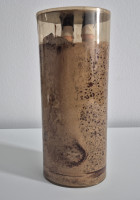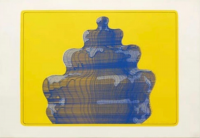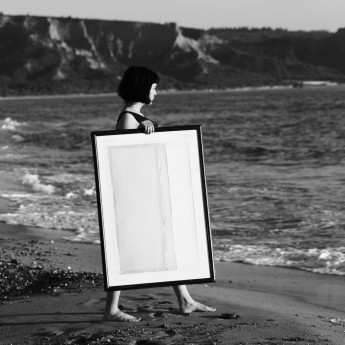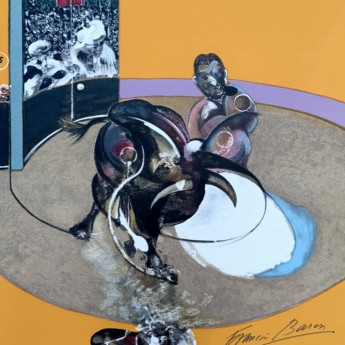
Details
Artist
Styles
Chocolate Easter bunny and chocolate Father Christmas, tin foil and cardboard collage on paper, held in plastic in frame - Hand signed and numbered // Lauf der Welt by Dieter Roth is a mixed media piece from 1970, blending unconventional materials to explore themes of impermanence and decay. The work features a chocolate Easter bunny and a chocolate Father Christmas, along with tin foil and cardboard, all assembled into a collage on paper. The composition is encased in plastic, which not only preserves but also accentuates the decomposing and fragile nature of the materials. Roth, known for his experimental approach and his interest in the ephemeral, uses these edible and perishable objects to comment on the transient nature of life and art. The piece, hand-signed and numbered, encapsulates Roth's fascination with entropy and the passage of time.
Lauf der Welt, 1970
form
Medium
Size
37.5 x 47 cm
- Inches
- Centimeters
Edition
Price
- USD
- EUR
- GBP
Details
Artist
Styles
Chocolate Easter bunny and chocolate Father Christmas, tin foil and cardboard collage on paper, held in plastic in frame - Hand signed and numbered // Lauf der Welt by Dieter Roth is a mixed media piece from 1970, blending unconventional materials to explore themes of impermanence and decay. The work features a chocolate Easter bunny and a chocolate Father Christmas, along with tin foil and cardboard, all assembled into a collage on paper. The composition is encased in plastic, which not only preserves but also accentuates the decomposing and fragile nature of the materials. Roth, known for his experimental approach and his interest in the ephemeral, uses these edible and perishable objects to comment on the transient nature of life and art. The piece, hand-signed and numbered, encapsulates Roth's fascination with entropy and the passage of time.
- Recently Added
- Price (low-high )
- Price (high-low )
- Year (low-high )
- Year (high-low )
Dieter Roth
Torte In Der Sonne (Fancy-Cake In The Sun), 1970
Limited Edition Print
Screen-print
GBP 4,200
What is Earth Art?
Earth art, also known as Land Art, emerged in the 1960s and 70s as part of the conceptual art movement. It involves creating artworks by sculpting the land or constructing structures in the landscape using natural materials like earth, rocks, or twigs. These works are often large-scale and emphasize the relationship between art and nature.



















